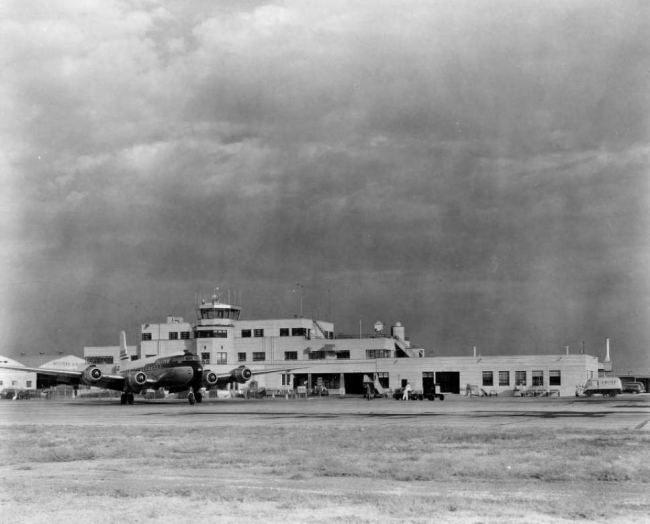POSITION STATEMENT ON THE SALT LAKE CITY INTERNATIONAL AIRPORT
NOVEMBER 2013
The Salt Lake City International Airport is soliciting public comment on redevelopment plans that will greatly affect the overall existing character, layout, and physical structures of the site. The Federal Aviation Administration (FAA), the federal agency responsible for project oversight, has conducted an Environmental Assessment and consulted with the Utah State Historic Preservation Office (SHPO) during the planning stages. It was concluded that the Salt Lake City International Airport is not eligible for the National Register of Historic Places.
However, the general public has made inquiries to Utah Heritage Foundation about the possibility of saving historic elements in Terminal One. Utah Heritage Foundation encourages the public to provide comment regarding saving the two features that are part of the building’s early construction (c. 1957-1960) and exceedingly represent a past-era of travel. These include:
- the world map and surrounding terrazzo floor; and
- the ceiling and column detail in the original restaurant location on the second floor.
While these elements are small in number and size, they are the only significant links to Salt Lake City’s and Utah’s air travel past and to the days when there was only one terminal. Their preservation and retention therefore becomes important to be captured in plans for a new terminal.
Because the overall structure is not eligible for the National Register of Historic Places, the level of significance and importance in saving these elements as part of airport redevelopment may be considered, in part, by the public’s communication of interest in seeing that happen. There are no guarantees that anything will be saved in Terminal One, but the best and only opportunity for preservation is to comment now and consistently into the future.
In addition to discussing historic preservation, the topic of materials conservation for a better environment is also critical. With the city’s ordinance that requires all public buildings over 20,000 square feet to meet LEED Silver standards, the conservation of existing materials, along with onsite recycling and reuse, will be a necessity to achieve that standard. Retaining and conserving historic materials and areas will help the project meet its LEED rating obligation.
To provide comment on the Salt Lake City International Airport plan, contact the following project representatives:
Hans Anker, P.E.
Project Manager
Civil Engineer/Environmental Specialist
FAA Denver Airports District Office
26805 E. 68th Avenue, Room 224
Denver, Colorado 80249
(303) 342-1265
Patty Nelis
Environmental Programs Manager
SLC International Airport
P.O. Box 145550
SLC, UT 84114-5550

